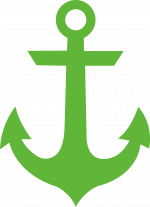
Was There a "Breakthrough of the Naval Blockade" in the Black Sea, or How the Media Fell for a Tweet
The Ukrainian media are busy spreading information about the breakthrough of the russian "blockade" in the Black Sea by three ships. But things are not as simple as they may seem. Latifundist.com took a deeper look into the matter.
Sofia Yaroshenko, Natalia Rodak, Latifundist.com
Where does the information about the breakthrough of the blockade in the Black Sea come from?
The news that three foreign vessels — AMS1, Sahin 2 and Yilmaz Kaptan — sailed through the Turkish Straits on the night of July 30 with their transponders on, not hiding their course to Ukraine, was first reported on Twitter by Markus Jonsson.
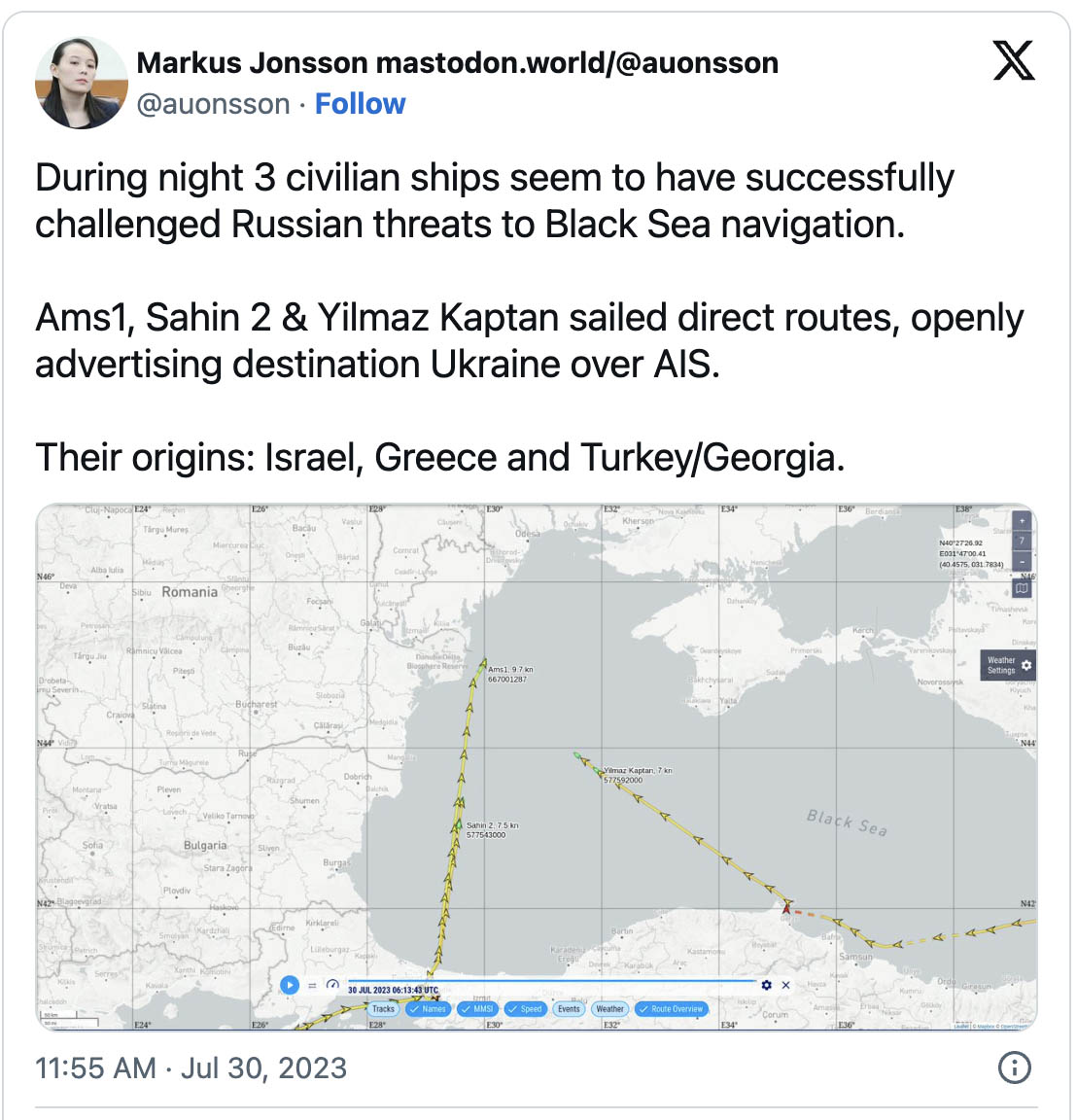
And then it was spread by Ukrainian news agencies. On the evening of July 31, the information space literally exploded with headlines: "Israeli ship is the first to break through the grain blockade by moscow", "NATO Planes Watched As Three Civilian Ships Ran Russia’s Naval Blockade Of Ukraine", "Israeli ship ignores russian Black Sea 'blockade', Greek and Turkish ships follow", etc.
In all these pieces of news, which our editorial team reviewed on the most well-known social and political websites, a representative of the OSINT community, Markus Jonsson, was cited as the original source.
It was also noted that the safety of the passage is ensured by the American P8 anti-ship aircraft (it is refuelled right in the Romanian sky). Additional information is provided by the Forte12 RQ-4 reconnaissance drone.
Ivan Niyakyi, co-founder and commercial director of the logistics company Soul Marine, notes that it is difficult to find the true source of this legend. He explains what is wrong with it:
- There exists no grain blockade. There are unilateral statements from russia that all ships heading to Ukrainian ports will be considered as carrying military cargo, and the countries of the ships' flags will be considered to be involved in the war on Ukraine's side. What dangers does this pose? None, because they are as vague as possible and are clearly unrealizable. Unless, of course, if we follow this flawed logic, half of Africa, Latin America, and a number of other exotic countries (popular flags in shipping) have become Ukraine's allies today.
- From the very beginning of the russia-Ukraine war, all ships heading to Ukrainian ports on the Danube have been passing through the Bosphorus without any additional inspections, commissions, or approvals. This was the case before the grain corridor was established, during its operation, and remains so today.
- The place where vessels wait to enter the Danube is the Sulina roadstead in Romanian territorial waters. From there, ships proceed to the Danube either through the Romanian Sulina Canal or the Ukrainian Bystre mouth. Both routes operate routinely.
- The route from the Bosphorus to Sulina passes through the territorial sea (12 miles) and the adjacent zone (24 miles) of Turkey, Bulgaria, and Romania. All three countries are NATO members, so there is a constant presence of aviation, navy, and security in the region.
- Indeed, some shipowners have restricted voyages to the Danube after threats from russia and strikes on the port of Reni in Odesa region, but these are isolated cases, and the overall picture has not changed. Yes, freight has increased, but not critically. Just look at the Sulina roadstead in Marine Traffic, where more than 100 vessels are waiting to enter Ukrainian Danube ports.
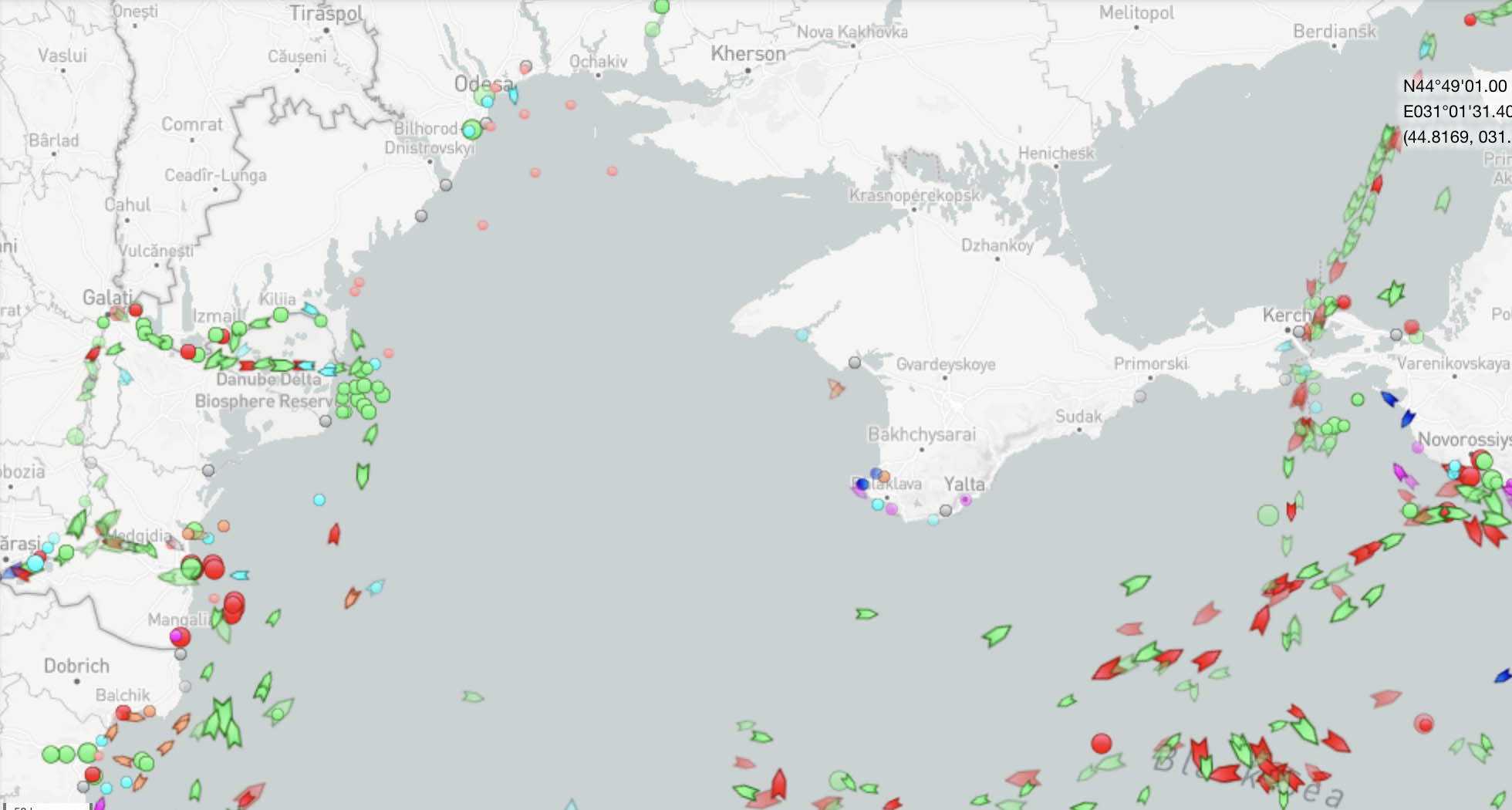
What is wrong with the reports of "three heroic ships"?
While on the evening of July 31, many journalists, public figures and politicians congratulated Ukrainians on the "breakthrough of the naval blockade of Ukraine," experts in the field were reserved in their emotions.
The head of the Institute for Strategic Black Sea Studies and editor-in-chief of BlackSeaNews, Andriy Klymenko, wrote on Facebook: "People ask me why I don't write about such epic events. The first reaction of a responsible person is "do no harm". The second reaction is to check the background."
"As of now, 9:40 pm Kyiv time, July 31, 2023, there are at least 16 "blockade breakers" (marked yellow on the map) at the anchorage south-southwest of the Snake Island (mostly in the Romanian waters). Some of them arrived there quite a while ago, at the time and after the eastern barbarians made their barbaric statements. A few more are currently on their way from the Bosporus. They do not consider themselves heroes and "breakthroughers" — they are just normal sailors doing their job. I am sure that Ukrainian and Romanian pilots, port workers and the Navy are doing what they need to do. And they are not making a fuss," Andriy Klymenko wrote.
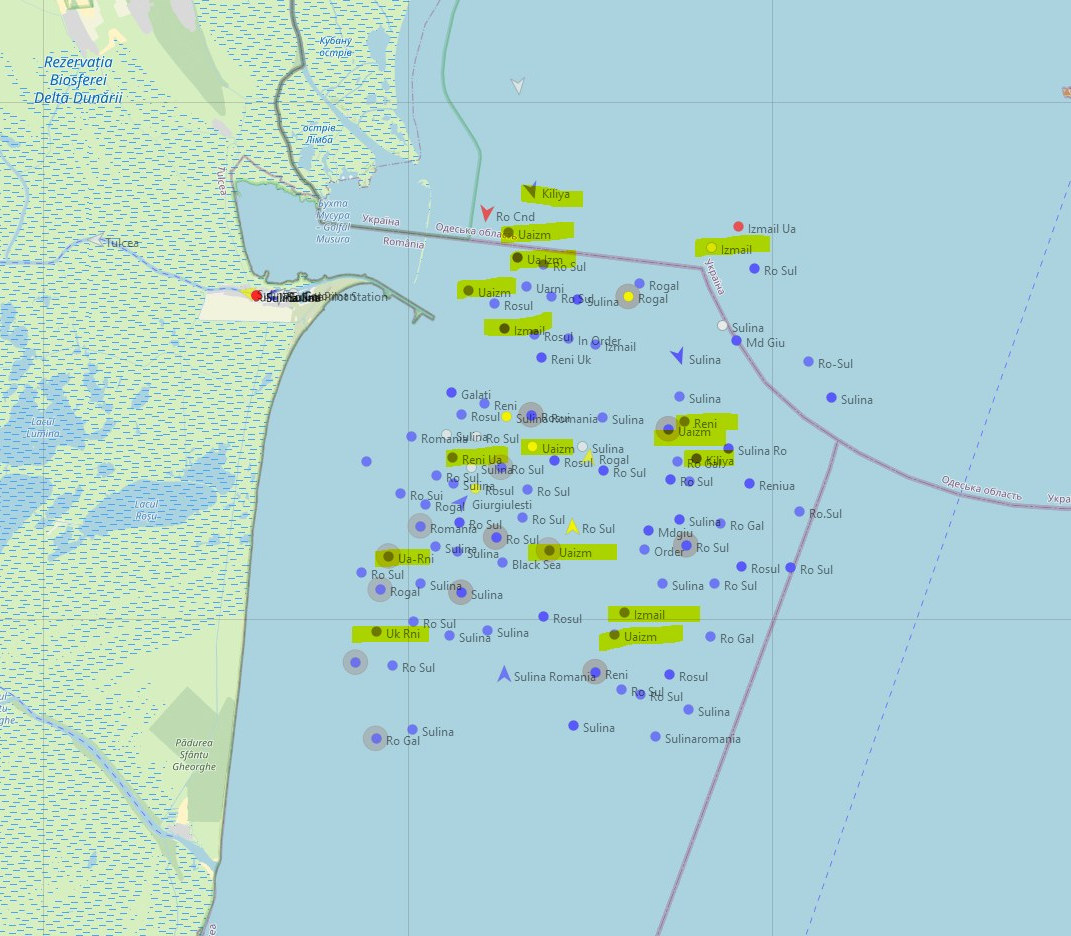
Did the ships really break through the blockade?
In fact, according to the MarineTraffic Live Ships Map, AMS 1 is sailing under the flag of Sierra Leone. Information about the shipowner is hidden, but, as Andriy Klymenko explained, the vessel belongs to the Turkish company Amir Marine Services Co.
The vessel was mistakenly called Israeli, as it left the Israeli port of Ashdod on July 20 and headed for Ukraine.
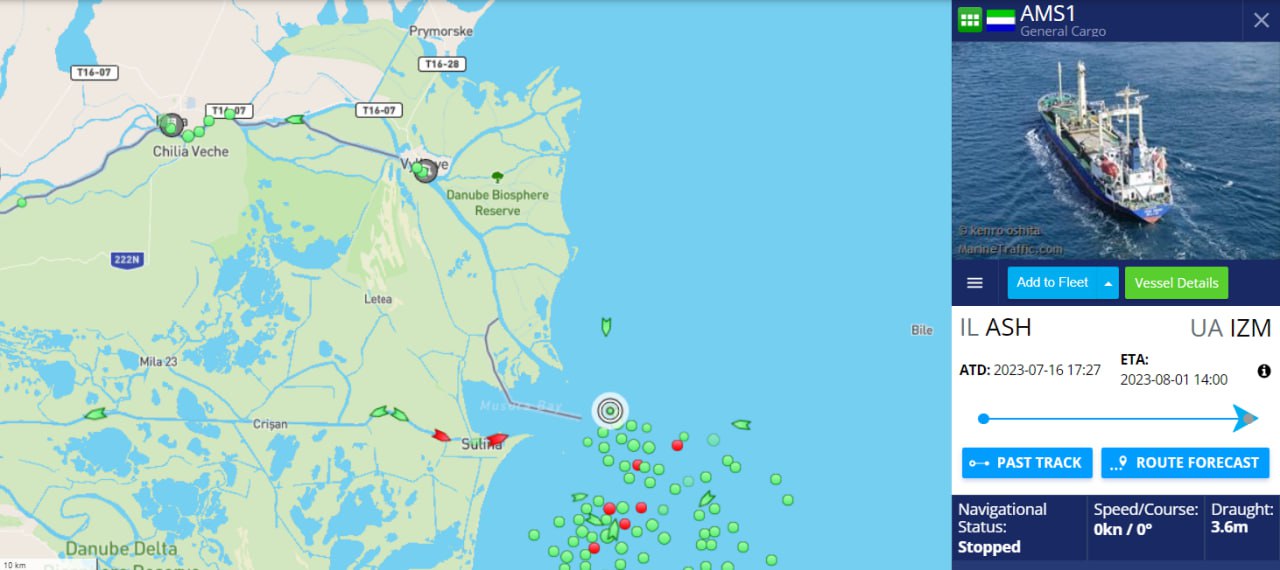
SAHIN 2 is not owned by Greece (according to VesselFinder, it is sailing under the flag of Vanuatu), and YILMAZ KAPTAN is not owned by Georgia (this vessel also sails under the flag of Vanuatu).

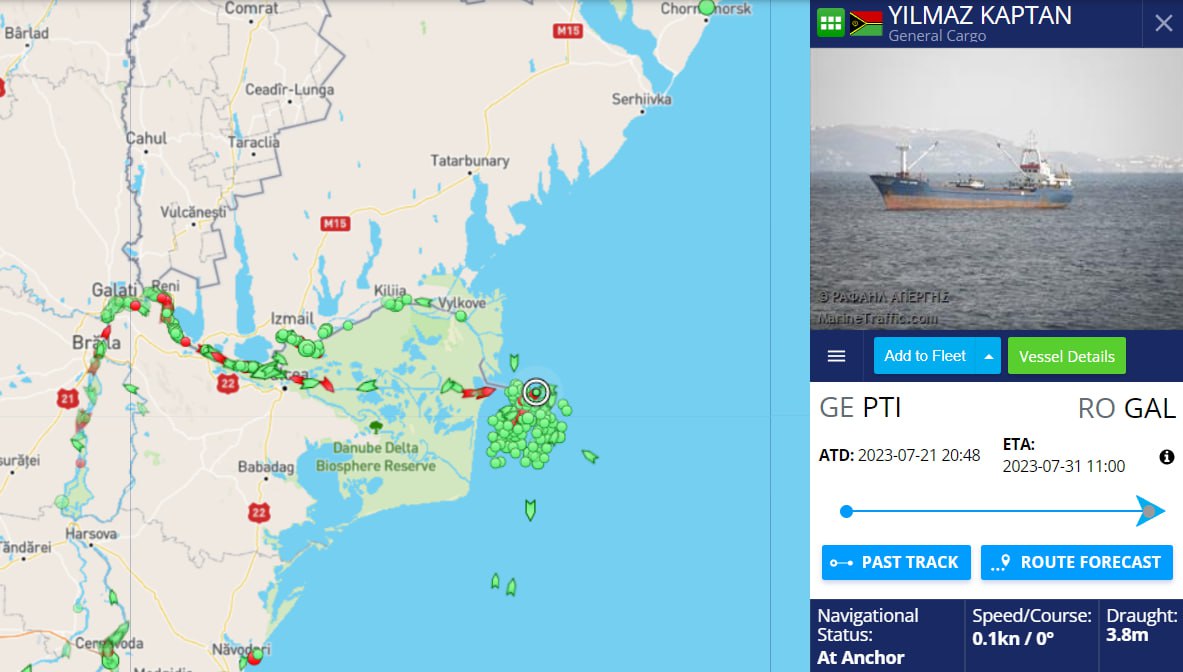
When the information about an "Israeli ship" trying to break through the russian blockade in the Black Sea became the subject of media coverage, Markus Jonsson, an OSINT analyst, clarified that in fact all these ships are sailing under different flags, but are controlled by Turkish owners. By "origin" he meant the countries from which these vessels started their voyages.
Where are AMS 1, SAHIN 2, and YILMAZ KAPTAN now?
The three vessels are in the Black Sea. SAHIN 2 and YILMAZ KAPTAN are in Romanian territorial waters. According to MarineTraffic, AMS 1, after leaving Romanian territorial waters, entered Ukrainian territorial waters and is now closest to the Ukrainian coast compared to the other vessels.
According to the AMS 1 traffic report, the vessel was supposed to arrive at the port of Izmail by 11:00 am on August 1. However, according to MarineTraffic, since 3 pm on July 31, the vessel has been anchored in the Black Sea southwest of Snake Island.
The ship's course shows that in the afternoon of July 31, AMS 1 entered the territorial waters of Ukraine and intended to sail to the Bystre mouth through which merchant ships enter Ukrainian Danube ports. However, at 1:58 pm, the vessel changed its direction and turned back.
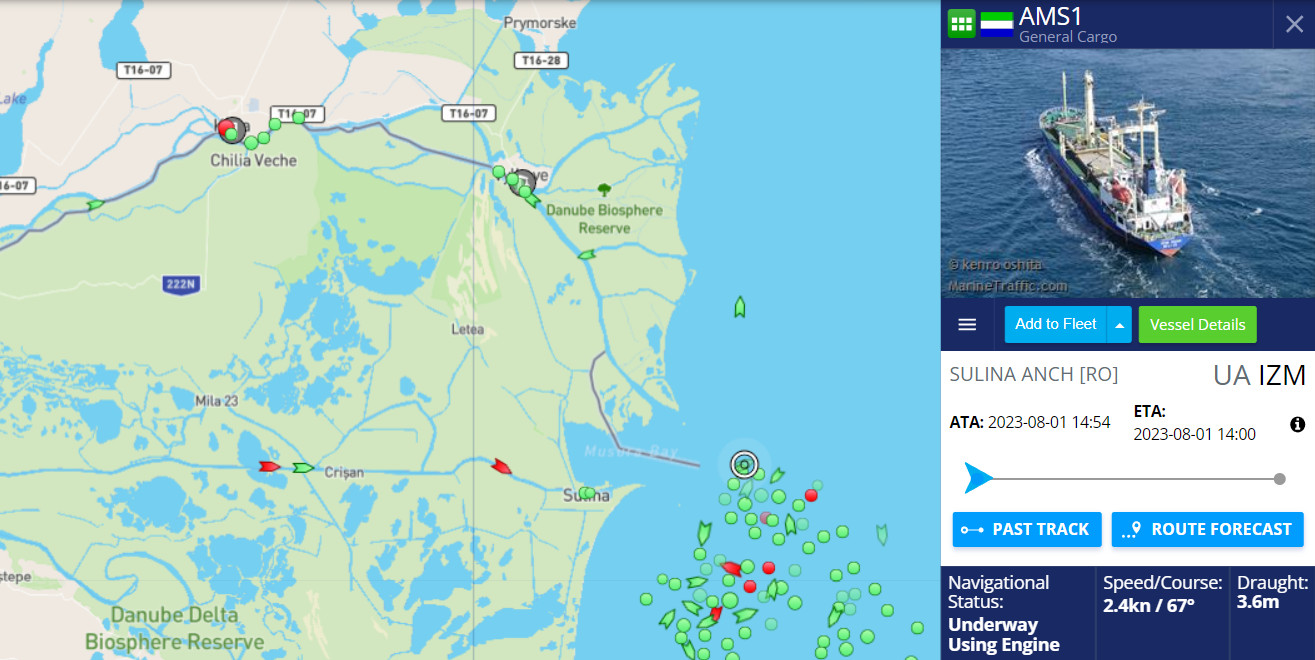
Why isn't the intense situation in Ukrainian waters a blockade?
As LCF Law Group's lawyers explain, the study of the maritime blockade shifts our attention from the usual area of law for grain trading in England and Wales, where port grain supply contracts are usually regulated, to the area of public international law.
A blockade in the general sense means an act of isolation of a certain territory when one party to the war prevents entry and exit from a certain part of the enemy's territory. In the modern understanding of a naval blockade, including the requirements for its existence, rights and consequences, the London Declaration on the Laws of Naval War of 1909 and the San Remo Manual on International Law Applicable to Armed Conflicts at Sea adopted in June 1994 play a central role.
A blockade is generally recognized as consistent with the following requirements:
- The blockade must be imposed by one of the parties to the conflict.
- The blockade must be declared by such a party.
- The blockade must be effective.
- The blockade must be impartially applied.
- The blockade must not impede travel to and from any point on the neutral coastline.
According to public international law, if these requirements are met, the blockade is considered legally justified, and the "blockading" party has the right to take enforcement action, including visits, searches, seizures and, in extreme cases, destruction of vessels that attempt to violate the blockade.
However, in the case of russia and Ukraine, the question arises whether a naval blockade can take place without an official declaration of war by russia. Since russia has not officially declared war on Ukraine and tries to call the military conflict a "special military operation," it is advisable to investigate whether the current understanding of the naval blockade allows for the possibility of establishing a blockade regime only on the basis of the international armed conflict.
The resolution of the UN General Assembly of March 2, 2022, headlined "Aggression against Ukraine", internationally confirms the fact of russia's military aggression against Ukraine. However, it is advisable to conduct a detailed analysis of russia's actions and take into account international standards and requirements for the existence of a naval blockade to determine the legal validity and possibility of its application in this context.
Andriy Klymenko argues that the term "grain blockade" is hardly applicable to the Danube ports.
"The term 'grain blockade' could still be understood in relation to the ports of Odesa region because there was a 'grain corridor' there that no longer works. This term is not very appropriate for the Danube ports. Neither is simply "blockade". A blockade is when warships interfere with the passage of ships, i.e., demand to stop, turn around, conduct inspections, etc. As far as I know, so far everything has been limited to warnings on the radio in very bad English. And reports of mining. And everyone realized that they wanted to dare the sailors," Andriy Klymenko wrote on Facebook.
